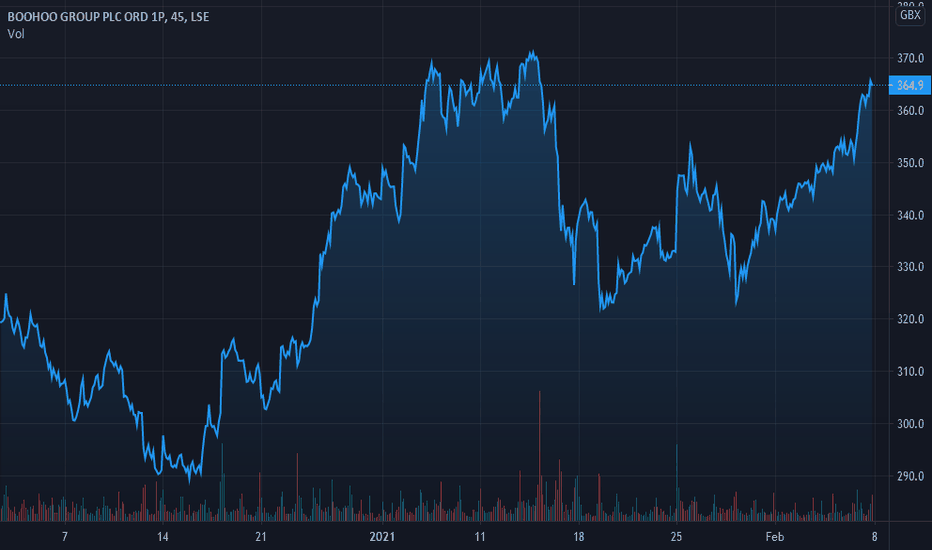On a rainy Monday morning in London, Sarah, a retail investor and self-proclaimed fashion enthusiast, sat down with her tablet to check her investment portfolio. One ticker caught her eye: BOO.L, the symbol for Boohoo Group on the London Stock Exchange. Once the darling of fast fashion and the digital retail world, Boohoo’s share price had become the topic of much debate. For Sarah, the stock was more than just numbers on a screen—it represented a story of rapid growth, challenges, and reinvention. As she read the latest updates, she wondered whether Boohoo could reclaim its former glory or whether the fast-fashion industry headwinds were too great.
A Brief History of Boohoo and Its Rise on the LSE
Founded in 2006 in Manchester, Boohoo quickly established itself as a major player in the fast-fashion industry, leveraging e-commerce to reach a young, trend-conscious audience. When the company went public on the London Stock Exchange in 2014, it was already known for its aggressive growth strategy and rapid response to changing fashion trends. The IPO was a success, with shares priced at 50 pence, and the company raised £300 million, using the funds to fuel its expansion.
Boo lse stock price soared for several years, benefiting from a boom in online shopping and the increasing shift toward fast fashion. By 2020, at the height of the COVID-19 pandemic, when online shopping became the primary retail mode, Boohoo’s share price hit an all-time high of around 415 pence. However, the journey since then has been anything but smooth.
The Fall from Grace: Challenges and Share Price Decline
Starting in 2021, Boohoo’s stock began to face significant downward pressure. The rising competition, supply chain disruptions, and increasing scrutiny over labor practices contributed to a volatile trading environment. According to a report from The Guardian, Boohoo’s share price fell by over 60% between 2021 and 2022, plummeting from its peak of 415 pence to approximately 160 pence by late 2022.
One major issue that affected Boohoo’s reputation was an investigation into working conditions at its suppliers’ factories in Leicester, where workers were reportedly paid less than the minimum wage. This controversy, reported extensively by The Financial Times, resulted in a loss of investor confidence and highlighted the challenges the entire fast-fashion sector faced in adhering to ethical standards while maintaining low costs.
The Impact of Economic and Industry Trends
Macroeconomic factors have also played a crucial role in Boohoo’s stock performance. The rise in inflation, particularly in the U.K., squeezed consumers’ disposable incomes, leading to reduced spending on non-essential items, including fashion. Data from the Office for National Statistics (ONS) shows that U.K. inflation peaked at 11.1% in October 2022, the highest in over 40 years. This led to decreased consumer spending, with retail sales volumes in the U.K. dropping by 5.2% in 2022.
Like many other retailers, Boohoo also struggled with increased shipping and material costs. In its 2023 fiscal year, the company reported that these challenges resulted in reduced profit margins. The annual report for 2023 highlighted a 17% decline in revenue year-over-year, from £1.98 billion in 2022 to £1.64 billion in 2023, despite continued investment in new product lines and technology. A report from Bloomberg noted that the company’s stock price fell to as low as 40 pence in mid-2023, marking an 85% decline from its all-time high.
The Path to Recovery: Strategic Shifts and Innovations
Despite these challenges, Boohoo has not been idle. In response to mounting pressures, the company launched a series of strategic initiatives to stabilize its finances and rebuild its reputation. In 2023, Boohoo announced a significant investment in supply chain transparency, implementing blockchain technology to allow consumers to track the origins of their purchases. According to Retail Gazette, this move was well-received and seen as a step toward addressing concerns about labor practices and sustainability.
Another notable shift has been Boohoo’s focus on expanding its international presence. While the U.K. remains a key market, the company has strongly emphasized the U.S., which accounts for about 30% of its total sales. Boohoo acquired several well-known retail brands, including Nasty Gal and PrettyLittleThing, to strengthen its foothold in the North American market. Although these acquisitions initially strained the company’s finances, they have started to contribute positively to revenue growth in newer markets.
Boohoo’s management has also pivoted toward a more strategic approach to discounting and inventory control to manage excess stock and protect profit margins. According to Goldman Sachs, which released an analysis in early 2024, this new strategy could improve Boohoo’s operating margins by 2-3% within the next fiscal year.
The Stock Market Outlook: What Analysts Are Saying
As of early 2024, Boohoo’s stock price has shown signs of recovery, trading at around 60 pence. While this is still significantly below its pre-pandemic highs, investors may regain confidence in its ability to turn things around. Analysts remain divided, however. A report from Morningstar rates Boohoo as a “Hold,” indicating cautious optimism about the company’s potential to stabilize and grow its market share in a challenging retail landscape.
Yet, challenges remain. The fast-fashion industry is under increasing pressure to shift toward more sustainable practices. According to a Statista report, 67% of consumers under 35 consider sustainability important in their purchasing decisions. This adds another layer of complexity for Boohoo as it must balance the fast-fashion model’s inherent speed and cost-efficiency with the need for ethical and sustainable practices.
Financial Indicators and Investor Insights
Financial indicators provide a mixed picture for investors like Sarah, who are trying to decide whether Boohoo is a stock worth holding onto or selling. Boohoo’s price-to-earnings (P/E) ratio has remained lower than the industry average, signaling potential undervaluation but also reflecting the risk factors involved. According to data from Yahoo Finance, the company’s P/E ratio stood at around 8.5 as of February 2024, compared to an industry average of 15. This could indicate that the stock is trading at a discount, but it also underlines the market’s cautious stance on its future profitability.
Conclusion: Is Boohoo Ready for a Comeback?
As Sarah closed her tablet, she couldn’t help but feel a mix of hope and caution. Boohoo’s journey on the London Stock Exchange has been a rollercoaster, marked by explosive growth, ethical challenges, and significant financial hurdles. The company’s strategic pivots—such as the push for transparency and the expansion into international markets—could pave the way for recovery, but execution will be key.
The future of Boohoo hinges on its ability to adapt to a changing retail landscape that values sustainability and ethical practices as much as affordability and style. While analysts remain divided, one thing is certain: Boohoo’s story is far from over, and investors and fashion enthusiasts alike will closely watch its next chapters.



